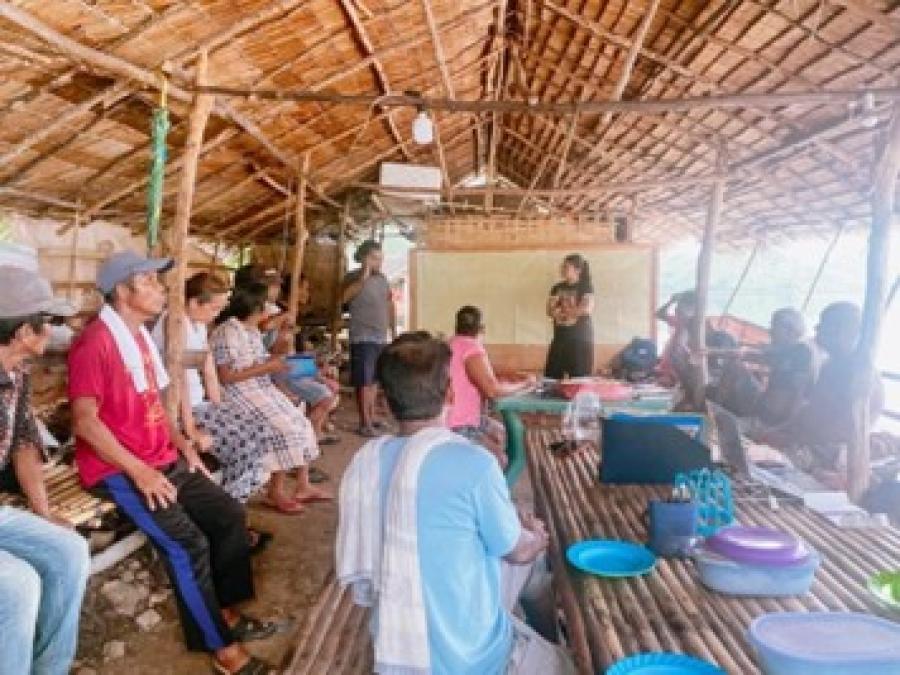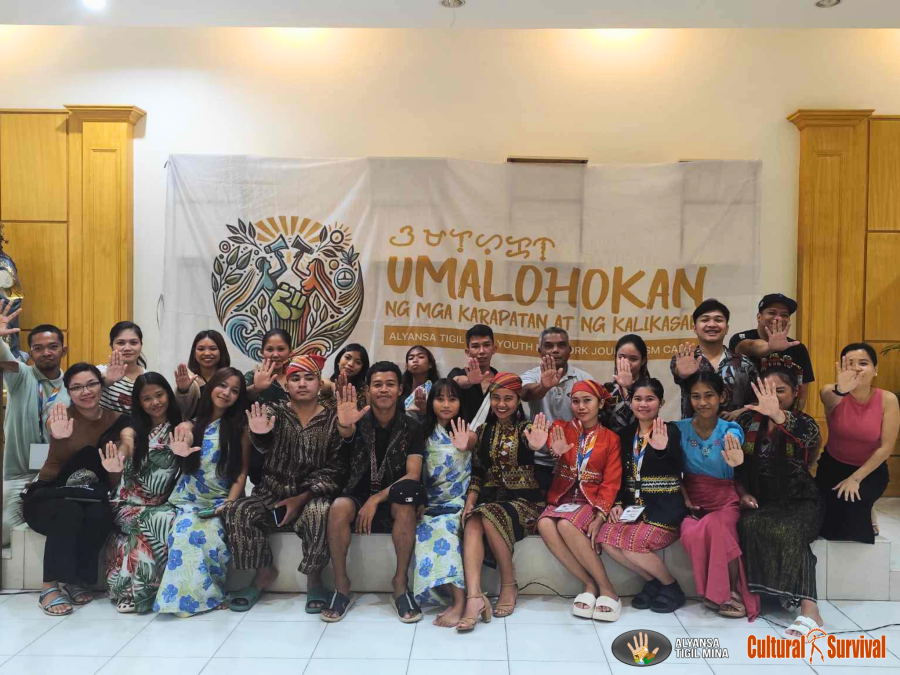Until the 1970s, all Agta boys knew how to shoot small bows and arrows by the time they were four, and by age 10 they often came home with small birds they had shot in the nearby forest. These children would typically pluck and clean their birds (often just one tiny sparrow), roast the meat on coals, and then divide and distribute small portions among their playmates. Today, bows and arrows are no longer seen, and young men know neither how to make nor shoot them. Young men are skilled, however, at playing basketball on cement courts in nearby lowlander settlements.
The Agta Negritos of eastern Luzon in the Philippines underwent traumatic cultural change in the 20th century as a result of deforestation in the Sierra Madre and other acculturative forces. By the end of the century, only three percent of the old-growth forest there remained, and the Agta culture and economy had changed drastically from one of foraging to a peasant lifestyle.
My wife and I began our fieldwork among the Agta in Casiguran, northern Aurora, in 1962. At that time the Sierra Madre forest was 80 percent old-growth full-closure forest and the Agta were still living a foraging lifestyle with trade relationships with non-Agta farmers in the lowland valleys. Today, the Agta are surrounded by many thousands of Filipino homesteaders who have entered the Agta lands, cut down the forest, and now outnumber the Agta in northern Aurora by a ratio of 80 to one.
Twentieth-century Casiguran Agta history can be divided into three periods. The first is the Forager Phase, which lasted until 1964, when the Agta were still able to live their traditional hunter-gatherer lifestyle based on collecting and trading forest products with downriver farmers for rice. The second period, the Transition Phase, was from 1965 to 1979, when the Agta slowly moved from their foraging economy toward a livelihood based on wage labor as their forest resources declined. Finally, the third period, the Peasant Phase, occurred from 1980 to the end of the century, as the Agta slowly moved toward peasantization when Filipino colonists moved into their forestlands, loggers destroyed the forest, and ecological degradation overcame the region.
The Forager Phase
In 1962, most Agta did not know they lived in the Philippines and were illiterate. Few could understand Tagalog, the national language. No one wore Western clothing, and they practiced a nomadic lifestyle living together in small kin-related camp groups that moved several times a year. Families of four or five slept on the ground in lean-to shelters or in tiny huts with bamboo floors that averaged in floor area only 3.9 square meters.
They lived separately from lowland Filipinos, with the forest areas to themselves, where they sometimes cultivated small gardens. They practiced a traditional animistic religion, with 13 percent of the adults being spirit mediums (shamans). They used traditional plant medicines, and called on their shamans to conduct séances for more serious illnesses.
In the 1960s, Agta still had wild meat to eat on a daily basis: deer, wild pig, monkey, or fish, and sometimes python. With the deer extinct and the wild pigs, monkeys, and fish almost gone, the Agta today get most of their protein from cheap canned fish they buy in town, or from snails the children gather from streambeds or on the coral reefs.
The Peasant Phase
Today the Agta are well-versed in national politics, vote in elections, and make trips by bus to Manila. At least 20 percent of those aged 15 to 30 can read in both their own language and in Tagalog. All now wear commercially manufactured clothing—they no longer file their teeth, wear earplugs, or scarify their bodies, and only the older people still wear armbands. They still live in small houses, but their settlements are now sedentary (no longer temporary “camps”), and houses have outside walls often made of boards—scrap lumber from the logging companies—rather than palm leaves. A most salient characteristic, the one that signals their shift from independent foragers into peasants, is their dependence on the national economy for their livelihood and their lower class status as landless agricultural laborers to the non-Negrito Filipino farmers and merchants.
The logging industry has been the primary agent for the ecological and cultural changes in the area. There were a few small logging enterprises in the Casiguran area before my wife and I arrived in 1962, but timber did not become a major industry in northern Aurora until the 1960s.
By the end of the 1970s there were reported to be “close to 10,000 persons … engaged in logging [in all of Aurora], and more than 40 firms operating [in the Province],” reported Benedicto Parimog in the province’s 1981-1982 schedule of market values. Four logging companies were working in the Casiguran Sierra Madre area at this time: Casiguran Bay Timber Corporation, Industries Development Corporation, RCC Timber Company, and Pacific Timber Export Corporation (popularly known as PATECO).
The destruction of the Agta’s rainforest homelands during our 40-year tenure there has been shocking. The depletion of the closed-canopy forest, as well as game and aquatic life, has destroyed the ecological base of the Agta foraging way of life.
Cultural and Health Changes
Today, while a few isolated families in the mountains may still practice the old healing rituals and séances, all Agta use Western medicines such as aspirin for minor illnesses, and go to the town hospital for serious cases, rather than relying on traditional shamanistic folk healers. The Agta praise the government hospital in Casiguran, which they recognize has saved many more Agta lives than did their traditional ritual cures. Based on my observations over the last 42 years, I am convinced that the introduction of Western medicines in the 1960s and their growing popularity in the 1980s played a role in stopping the decline of the Agta population, which dropped 40 percent between 1936 and the 1970s.
Not all of the changes brought by outsiders over the last four decades have been bad. Older Agta claim they prefer their way of life today over their traditional past lifestyle. They not only value modern medicines, but they welcome the cash economy. They say they appreciate the opportunity to do casual labor for new in-migrant lowlanders rather than continue their traditional trade relationships with lowlander farmers because they get paid in cash (the equivalent of U.S. $2.50 a day), which is worth almost triple the buying power of what they earned in the 1960s when they were paid in unhusked rice grain.
Still, the cultural survival of the Agta Negritos is in peril. The introduction of commercial liquor has turned at least half of Agta adults into chronic alcoholics. The Agta language is endangered and will almost surely go extinct before the end of the century. The most serious aspect of all this change is manifested in the Agta's loss of their human rights and especially their land rights (see CSQ 8:2 and 8:3). In the Kinabunglan rivershed in February 1994, a logging company spent a month cutting trees using nine bulldozers and about 20 trucks to haul the logs. The next heavy rain brought numerous landslides, destroying much of the resources of the area where the Kinabunglan Agta band has lived for centuries. Unless and until local and national governments, the United Nations, and the public come to recognize and support the rights of all indigenous peoples, and until the Agta and other disenfranchised peoples can gain the power to lobby for their own self-determination, we will continue to read accounts like that of the Agta and other indigenous peoples featured in this Cultural Survival Quarterly.
Thomas N. Headland (www.sil.org/~headlandt/) is an anthropology consultant with SIL International (formerly the Summer Institute of Linguistics). His specialty is tropical forest human ecology. He and his wife, Janet Headland, have been working with the Agta Negritos for most of the last 40 years. Thomas Headland has published 12 books and 100 scholarly articles.
References and further reading
Early, J.D., & Headland, T.N. (1998). Population Dynamics of a Philippine Rain Forest People: The San Ildefonso Agta. Gainesville, Florida: University Press of Florida.
Griffin, P.B. (1984). Agta Forager Women in the Philippines. Cultural Survival Quarterly 8:2, pp 21-23.
Headland, T.N. (1984). Agta Negritos of the Philippines. Cultural Survival Quarterly 8:3, pp 29–31.
Headland, T.N. (1988). Ecosystemic Change in a Philippine Tropical Rain Forest and its Effect on a Negrito Foraging Society. Tropical Ecology 29:2, pp 121–135.
Headland, T.N. & Headland, J.D. (1999). Agta Human Rights Violations. www.sil.org/~headlandt/agta.htm.
Headland, T.N. & Blood, D.E., Eds. (2002). What Place for Hunter-Gatherers in Millennium Three? Dallas, Texas: SIL International and International Museum of Cultures.
Parumog, B.P. (1982). Schedule for Market Values 1981–1982 for the Province of Aurora, Philippines. Bound



